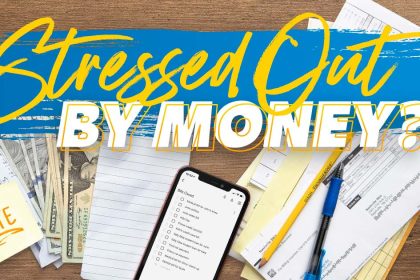Credit Sesame’s personal finance news roundup June 1, 2024. Stories, news, politics and events impacting personal finance during the past week.
US consumer confidence bounces back
The Conference Board’s Consumer Confidence Index rose in May 2024, following three months of declines. Consumer views of both current conditions and expectations for the month ahead improved. However, the Expectations Index remained below 80, which typically signals an upcoming recession. May was the fourth straight month the Expectations index remained below that cautionary level. Still, confidence levels improved across all age groups last month. Wealthy consumers are most likely to have become more upbeat about the economy. People making over $100,000 a year showed the biggest rise in confidence. See news release at Conference-Board.org.
The number of distressed borrowers is rising
A credit counseling nonprofit has reported that an increasing number of Americans are seeking help with their debt. Money Management International reported a 72% year-over-year increase in the number of people seeking credit counseling. Those seeking help had an average debt balance of over $30,000, an all-time high. Most of this debt is in credit card balances. Higher-income consumers are not immune to debt struggles. Over the past year, demand for credit counseling rose by 73% among people with above-average incomes. See article at Morningstar.com.
Loan originations head back up after temporary lull
VantageScore reported that Americans opened more new credit accounts across all product types in April. The products tracked by the VantageScore report are auto loans, credit cards, personal loans, and mortgages. For credit cards and personal loans, it was the first time so far in 2024 that credit origination rates increased. Despite increased credit originations, the overall credit utilization rate dropped for a fourth consecutive month. Credit utilization is the percentage of available credit a consumer currently uses and is a factor in calculating credit scores. Another good sign for credit scores was that delinquency rates decreased across all categories for a second consecutive month. However, delinquency rates remain higher than they were a year ago. See report details at VantageScore.com.
Inflation remains consistently persistent
The Personal Consumption Expenditures (PCE) price index rose by 0.3% in April 2024 and is up by 2.7% over the past year. The PCE price index is the measure of inflation that the Federal Reserve uses as a basis for its policy decisions. April was the third consecutive month with a 0.3% increase. If continued, this would project an annual inflation rate of nearly 3.7%. Thus, inflation over the past 12 months and the recent pace of inflation remain above the Fed’s target of 2.0%. One encouraging sign was that the core inflation rate rose by just 0.2% in April. This is below the overall inflation rate and the lowest monthly increase in core inflation so far in 2024. A lower core inflation rate could signal that rapid price increases are becoming less pervasive throughout the economy. See details at BEA.gov.
FDIC reports improved bank performance but some warning signs
The FDIC gave its quarterly banking profile, providing an overview of US banking conditions. Overall net income rose by 79.5% in the first quarter of 2024. However, much of this was due to favorable comparisons after non-recurring expenses in the previous quarter. Without those unusual items, net income was up by 14.3% in the first quarter. This improvement came even though net interest margins declined due to rising competition for deposits. Total domestic deposits increased for a second consecutive quarter. Bank assets, including loans made to customers, remained generally solid with a few key exceptions. Asset quality metrics declined for both commercial real estate and credit card accounts. See banking profile at FDIC.gov.
1st quarter economic growth was slower than previously thought
The US economy grew at a 1.3% rate in the first quarter of 2024. That represents an annual rate of growth after adjustment for inflation. The 1.3% growth rate was slower than the previous estimate of 1.6% growth. The reason for the downward revision was primarily that consumer spending was slower than previously thought. Both first-quarter estimates represent a slowdown from the 3.4% growth rate in the fourth quarter of 2023. The Bureau of Economic Analysis will release its final estimate of first-quarter growth in about a month. See GDP report at BEA.gov.
Mortgage rates bounce back up
The stay of 30-year mortgage rates under 7% was short-lived. After falling below 7% last week, 30-year rates are back above that threshold already. 30-year mortgage rates rose by 0.09% to reach 7.03%. The rise follows three weeks of declining rates. 15-year mortgage rates also turned back upward after three weeks of declines. 15-year rates rose by 0.12% to 6.36%. See rate details at FreddieMac.com.
Weekly news headlines from Credit Sesame
Read the full article here


















